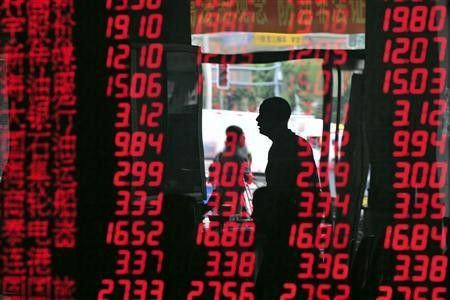Is China left holding the credit baby?

August's dramatic financial shock, which is now both feeding off and risks fueling another economic downturn, may well introduce a third phase of the four-year-old global credit crisis -- the infection of the ultimate creditors.
The crisis, triggered by mortgage and housing bubbles in many western economies, first hobbled the banks and is now undermining the governments who where forced to bail them out.
The United States has lost its risk-free credit rating from one agency and the euro zone is in a seemingly endless struggle with either sovereign insolvency or liquidity crises across its members.
With faith in western powers' ability or willingness to resolve those debt problems ebbing rapidly, the next twist in the saga shifts to the surplus countries who've bankrolled them.
It's little wonder one of the most anxious governments over the past week has been creditor China -- where state media decried U.S. debt addiction and "short-sighted" political budget rows -- as much as debtor America or teetering Italy or Spain.
The old adage says you have a problem if you owe the bank a thousand dollars, but the bank has a problem if you owe it a million.
China has lent the United States up to $2 trillion -- that's 30 percent of Chinese annual output banked in one country -- and probably the lion's share of the rest of its $3.2 trillion of hard currency savings to European governments.
Its ire -- and presumably that of other surplus nations and institutions who've always lent to the United States because they were sure of getting all their money back -- is that it's now a captive creditor that may well be raided.
Even if default fears seem overblown -- despite Standard & Poor's removal of the United States AAA rating last week and market fears about Italian or Spanish solvency -- mounting market unease at governments' inability to assuage creditors is in itself set to sap economic growth critical to long-term debt sustainability.
And that's where confidence spirals get out of control.
"EITHER WAY, CHINA LOSES"
For big creditors like China, it's a triple whammy.
Faltering western demand saps China's own export-driven growth, its hard cash savings are undermined by previously unthinkable credit concerns, and the likely policy response to western demand shocks will be more money printing.
That money printing, according to HSBC chief global economist Stephen King, simply weakens the dollar while keeping bond yields low, transferring the debt burden to foreign creditors who see the dollar value of their assets dwindle for the sake of supporting US exports and growth.
The Chinese could try to print more money too, but that would be dangerous socially as local inflation is already unacceptably high. Threats to sell U.S. assets are similarly self-defeating as any resulting run on the Treasury market now would likely have the same short-term valuation consequences.
"Either way, China loses," King wrote, adding there were then two scenarios -- one 'good', involving a long-elusive G20 grand bargain on policies to cut global imbalances, and one 'terrifying', where China gets so irked at being cornered that it purposely precipitates a U.S. and global financial crisis.
The net long-term outcome of either scenario, he added, was erosion of the dollar's dominant reserve currency role. That's one reason China already advocates the development of a mixed basket of key reserve currencies along the lines of the International Monetary Fund's Special Drawing Rights.
China is clearly not the only major creditor of the United States, although it is by some distance the largest. Japan also holds about a trillion dollars of U.S. government debt, while other major sovereign creditors include Brazil, Taiwan, Russia and the big oil-exporting nations.
But the idea the United States and other western nations devalue out of trouble is far from speculation.
Last year's "currency wars" warning by Brazil was a direct response to Washington money printing. And yet the dollar's inflation-adjusted trade weighted index has continued falling through July to its lowest level since the collapse of the Bretton Woods fixed exchange rate system in 1973.
BRETTON WOODS II
In one respect, perhaps the credit crisis has come full circle. Part of the blame for the cheap credit binge of the noughties lies on the extent of currency pegging and reserve stockpiling across Asia after the emerging market crises of the 1990s and what led to what many dubbed Bretton Woods II.
These stockpiles, accumulated via export-boosting currency pegs and providing sizeable financial buffers for developing economies now fearful of IMF bailout remedies, were banked mostly in AAA Treasuries and to a lesser extent European debt.
This, in turn, held benchmark borrowing rates in those economies artificially low for longer and helped stoke the worst excesses of the private-sector credit boom post-2000.
This Bretton Woods II, however, was durable because it locked in interdependence -- the years of gains and now potentially the losses. Ideas of blissful decoupling of the developing creditor nations do not sit well with that even if these nations appear to have better long-term prospects.
And it's no surprise that, despite all the angst in Washington and Brussels, emerging markets have underperformed developed economy stocks by some three percentage points since the mood turned sour on Aug 1.
© Copyright Thomson Reuters 2024. All rights reserved.





















